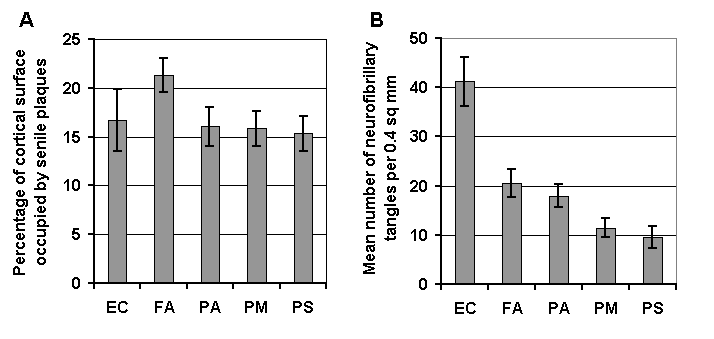Poster | 6th Internet World Congress for Biomedical Sciences |
Domizio Suvā(1), Isabelle Favre(2), Rudolf Kraftsik(3), Monica Esteban(4), Alexander Lobrinus(5), Judit Miklossy(6)
(1)(2)(4)(5)(6)CHUV, Institute of Pathology - Lausanne. Switzerland
(3)IBCM - Lausanne. Switzerland
|
|
|
|
|
|
[Neuroscience] |
[Pathology] |
 |
|
Figure 2. Cortical surface occupied by senile plaques and number of neurofibrillary tangles in the primary motor cortex in Alzheimerīs disease compared to other cortical areas.
Mean percentages and standard errors of cortical surface occupied by senile plaques and neurofibrillary tangles in Alzheimerīs disease (cases No 1-17) in five different cortical areas (see Table1). There was no significant difference between the five cortical areas including the primary motor cortex with respect to the percentage of senile plaques. The number of tangles was significantly lower in the associative cortical areas than in the entorhinal cortex. Compared to the associative areas the number of tangles was slightly lower in the primary motor cortex, with a borderline significance. EC = Entorhinal cortex, FR = frontal associative cortex (Brodmannīs areas 8,9); PA = parietal associative cortex (Brodmannīs areas 39, 40); PM = primary motor cortex (Brodmannīs area 4); PS = primary sensory cortex (Brodmannīs areas 3, 1, 2). |
|
|
|
|
|
|
[Neuroscience] |
[Pathology] |